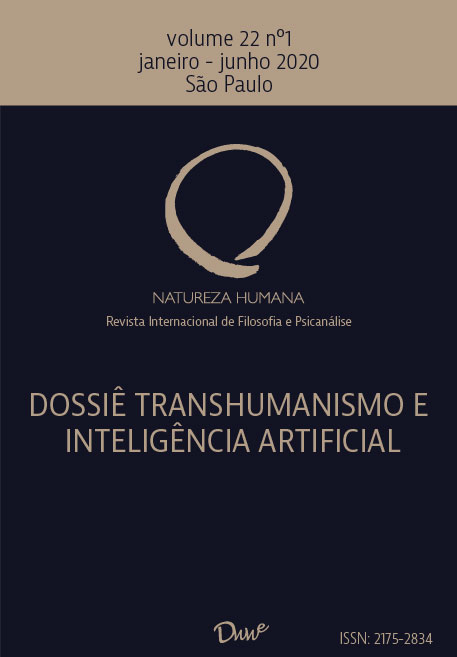Active externalism and NBIC technological convergence: the advent of hypercognition
DOI:
https://doi.org/10.17648/2175-2834-v22n1-433Keywords:
active externalism; technological convergence; hypercognition.Abstract
This article aims to support hypercognition, the result of the interaction of human cognition with interactive artifacts from Convergence Technology NBIC (nano-bio-info-cogno), as a feasible perspective in the face of post-humanist theses that outline an ontological transformation of the human being from the fusion with machines. The feasibility of hypercognition is based on the conception of cognition supported by active externalism, especially that of Andy Clark, for which the environment has relevant enoughcharacteristics to play a leading role in the cognition process, since humans would already be, by nature,experts in the task of incorporating non-biological material into their physical and cognitive routines. The symbiosis between humans (genuine technological cyborgs) and machines would be something that would happen naturally, especially in the sense that cognitive processes would be dependent on external aids. In the context of the NBIC Technological Convergence, this symbiosis is what enables hypercognition.Downloads
Published
2020-07-03 — Updated on 2020-07-03
How to Cite
Candiotto, K. B. B., & Karasinski, M. (2020). Active externalism and NBIC technological convergence: the advent of hypercognition. Human Nature - International Philosophy and Psychology Review, 22(1), 71–94. https://doi.org/10.17648/2175-2834-v22n1-433
Issue
Section
Dossiê








